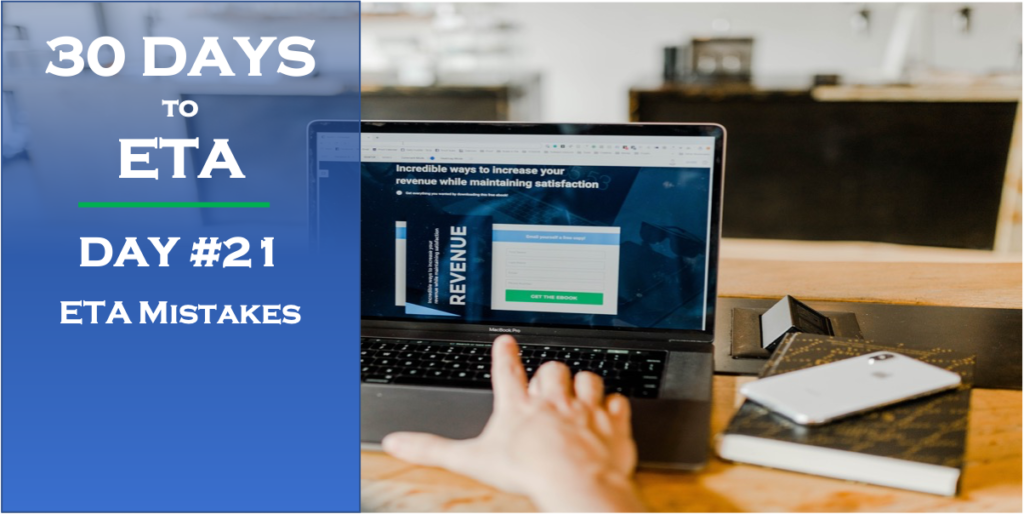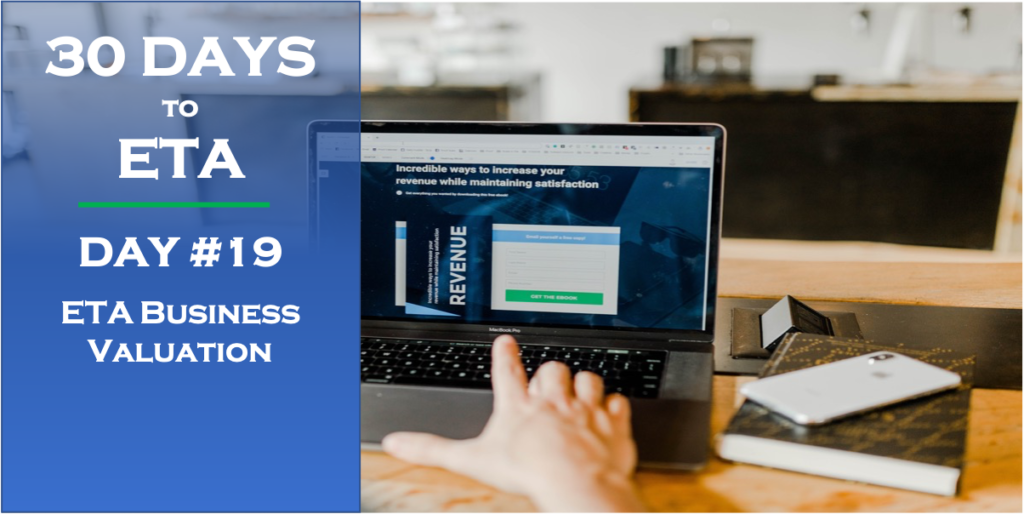If you’ve been reading along in this 30 Days to ETA series, you know that in the Day #23 post I believe that as an Acquisition Entrepreneur if you fill your Mergers & Acquisitions pipeline with qualified companies to explore acquiring, Entrepreneurship Through Acquisition life will become easier for you. But how will you know which businesses are right and which businesses are wrong to begin the filtering process on? So, in yesterday’s 30 Days to ETA post, we explored ETA Industry / Business ID (You can read the previous post by CLICKING HERE). But identifying seller personas and industry specifics are not enough. You’ll want to know how to rip apart the information you receive as a part of due diligence. The center piece of this information is the Confidential Information Memorandum, or CIM. So, in today’s 30 Days to ETA post, we’re going to explore The ETA Confidential Information Memorandum (CIM)… Enjoy!

The ETA Confidential Information Memorandum (CIM)
This collection of written documents and printed reports provided by sellers on their business’ relevant details of their company is called a Confidential Information Memorandum (CIM). If the CIM is well-comprised and well-structured, a CIM book will have you as the Acquisition Entrepreneur salivating at the opportunity.
5 Sections Every ETA CIM Needs
Since every company is different, the ETA Professional Team will offer advice for what you need to see in the CIM for the industry you are searching in. Most ETA CIMs include five major categories.
- The history of the company
- The company’s team
- Their business model
- The company’s current financial situation
- The company’s financial forecast
They say that compiling this information is hard work. At times, digging through this ETA CIM will feel like even harder work — It will feel tedious, futile, and frustrating. But if you take the time to review it, the ETA CIM’s existence could bring you to a conclusion as to whether or not to filter the organization out of the ETA Deal Flow mix, or pass them on to the next step.
Why Most Sellers Should Follow an ETA CIM Pro Forma
For me, reading an ETA CIM is an evolving process. I want to see the entire company outlined in such a way that it tells an accurate story of the business that you are investigating for Mergers & Acquisitions.
If accuracy in ETA CIM is the goal, why are so many business sellers not willing to put in the effort to produce a quality production? The reason is that it takes effort and energy, and often times while they’ve successfully run their business for potentially several decades, this might be the first time that they are preparing it for sales. Therefore, they rely on the advice/counsel of others who might not have the best example, or pro forma to follow.
I love seeing an ETA CIM pro forma helps business owners communicate where they have taken their company over the years — What is their story? It also provides a nice trail guide of where they’ve been and what’s worked over the past few years. Beyond Profit and Loss Statement categories that fall into the ETA CIM pro forma for each year, somehow business owners miss that the ETA CIM needs to also include current year to date information as well. This way Acquisition Entrepreneurs can clearly see how much the company’s income has grown over the past four or five years.
Once ETAs can see the actual growth rate of the organization over the years, they can make realistic predictions about their future financial growth. If the company’s revenue has grown at a 10% annual rate, then the ETA cannot realistically project a 30% yearly growth rate in their pitch book unless they make drastic changes. However, if the ETA CIM pro forma shows business owners have maintained a historic growth rate of 10%, and they’re now projecting a 9% future growth rate, that should be easy to obtain. The Acquisition Entrepreneur can easily “buy into” that calculation.
Reading The ETA CIM
Where do you start? Here are a few ideas to help you get started on your ETA CIM. You’ll need to modify them to fit your individual needs.
- Designate a team member to review all the necessary information.
- Write down and record your reflections of the company’s history, including highlights and lowlights.
- Ask your ETA Professional Team — or deal flow analysts — to review/write their reflections.
- Identify questions that you have to be answered by broker and/or business owner.
As you review the ETA CIM, don’t get so caught up in every word, there will be general themes that should emerge. Your ETA Professional Team will make suggestions on what are growth opportunities which will culminate in whether or not to move forward with the opportunity or discard it.
ETA CIM Red Flags
When you read the ETA CIM, you obviously want to see the company in an accurate state, not a fictional “best light possible” one. Unfortunately, most seller brokers will want to show historical growth that shows-off their all-star team members if their financials don’t justify success. ETA CIMs will also outline an “enviable business model” and illustrate the company’s current “stable” financials, but provide little/no accuracy. Two ETA CIM Red Flags that should cause you to run for the next opportunity hill are:
- An inflation of financial forecast. If their ETA CIM makes their financial forecast overly optimistic, you should delay the mergers or acquisitions process to make sure the company reaches its “projected” sales success. If it fails to meet predictions, you should significantly lower the terms of your Letter of Intent (LOI) as you drive towards Purchase Order (PO).
- Don’t give a pass on the company’s success. As an ETA, you would love to get your hands on the ETA CIM to learn all of the company’s secrets. If they provide those secrets with supporting company data without asking you know you’re in good shape. Unfortunately, my experience is that securing secrets is akin to pulling teeth. Too much effort to identify company success details is the equivalent in my mind to too much effort and energy. I’m not afraid to dig for details, but at a certain depth even I will stop!
SUMMARY
In this 30 Days to ETA post, we explored The ETA Confidential Information Memorandum (CIM). A good ETA CIM can put you in a great position to offer a fair price/offer for a business. A poor ETA CIM will also provide you with an opportunity to ask questions of the broker and business owner. The filters you put in place will allow you to determine whether or not the ETA CIM provides you, the Acquisition Entrepreneur with the information required to either continue due diligence or eject.
Sam Palazzolo



